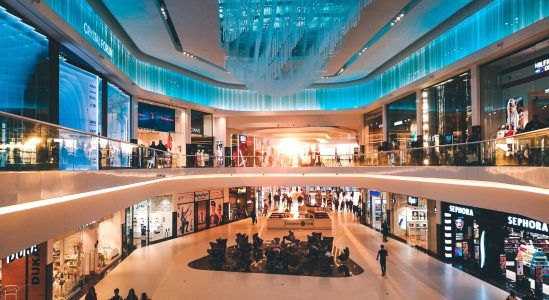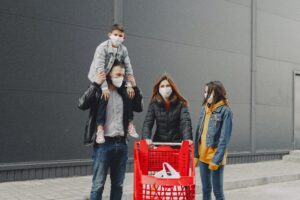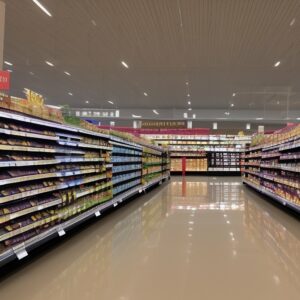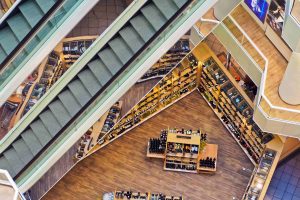As we described in our previous post, in-store analytics can be applied in a wide variety of businesses, including shopping malls. It allows us to analyze the behavior of customers to understand their shopping trends and habits, but the analytical capacity isn’t limited to this alone. We can measure other activities that take place within malls using shopping mall traffic analysis. One such activity would be various events organized within a shopping center. We will be taking a closer look at these events and how it is possible to measure their impacts within a shopping complex.
Shopping malls attract a lot of people, this stems from the wide variety of products and services offered, so managers take advantage of the situation and organize targeted activities for the different demographic groups. It is not unusual to see entertainers playing games with children or maybe companies showing new products they just launched. And, predictably, these activities aim at fostering sales, so thanks to tracking technologies we can measure their effectiveness.
Performance of Activities in Malls
Let’s take a look at a case study of a Spanish mall. Thanks to its 218 commercial areas distributed on two floors, it attracts approximately 7 million visitors every year. Hence, various activities and events are held throughout the year to entertain customers.
For instance, over a given time period, there was a spike in sports-related activities and since they were able to identify an increase in customers interested in sports stores, they decided to organize related events, resulting in the celebration of the CrossFit games during a weekend. Using in-store analytics we are able to track customer activities before the various events and those that occur during and after the games. What we are trying to piece together is the effectiveness of the staged event and see if it leads to a notable increase in sports-related sales.
Shopping mall traffic analysis
To start off with, let’s compare the traffic received in the sports stores on the first floor of the shopping center before and after the event happened.
Before and after foot traffic measurement using Wi-Fi tracking in a Shopping Mall
As we can see, traffic increased up to 100% in some cases just because of this event. In many cases, customers need a boost to encourage them to go shopping. Since participants used a wide variety of accessories and sports-related items during the event, we could assume that this was a strategy to create a need that was previously non-existent. And it worked!
Driving customers’ attention through events
This example demonstrates that it is very important to attract customers’ attention with appealing actions that are out of the ordinary. And, more importantly, is to measure their impact in order to see how customers are responding to them, something that can be easily done thanks to tracking technologies. Having this data, managers are able to quickly tell what works and what doesn’t. If the reverse was the case in this example and customers did not have a notable increase in interest for sports-related goods showcased in the live event, then managers can use that information to either tweak future events or change things all together and try other ideas.
For mall managers, this information is important to see the changes in traffic patterns, but this is relevant as well for tenants. At the end of the day, tenants are the ones who need to measure the effectiveness of their campaigns and investments in the shopping center. Hence, if mall managers share information about customer behavior within their stores, they will be helping tenants as well as strengthening their relationship and commercial connection with them.
Pop-up stores in shopping centers
Let’s say that a cosmetics brand launches a pop-up store in one of the main aisles of the shopping center. Let’s assume that the intention of this campaign is to launch a new product (maybe a lipstick line) and promote it, as well as to improve brand awareness (maybe by giving samples or something else to attract customers). In order to attract customers, they hire a professional make-up artist or Youtuber and make the stand more appealing to shoppers.
Benefits of shopping mall traffic analysis
Thanks to tracking technologies, we can help both the center and the retailer by:
- Measuring the traffic before and after the event
- Measuring the engagement rate – people who stop to see what is going on
- Measuring the conversion rate – people who have bought something vs people who have passed by
- Measuring where are people coming from in order to contextualize visit and shopping missions (these are the ways we categorize shopping journeys)
- Measuring the frequency of visit in order to identify which are the best days to launch future promotions
- Benchmark with previous campaigns or similar centers in order to measure the impact of the promotion and see whether it has been a success or not
Having this information at hand allows organizers to understand the outcome of their event. Not only are they able to know the direct impact of such a campaign but are also able to gauge the effectiveness of various components within the event itself. For example, the engagement rate with the Youtuber or makeup artist, what products within the new product line gathered the most interest – this is not always the most item sold and this information can be used to tweak things like pricing and other features.
Conclusions
Events are a big part of the shopping mall experience. Most customers can recall, at some point, seeing or taking part in such a shopping complex they frequent. Some have turned out to be very fun and entertaining, some reminded us of a desire to make certain purchases and others have left us uninspired and only illicit a casual glance. To an organizer, these varied reactions are important as they tell the success or failure of an event. Shopping mall traffic analysis is a great way to understand our customers’ needs.
While there are a ton of different types of retail events that can be hosted within a shopping mall (pop-ups, all-doors events, partner events, influencers events, etc.), every event type has a different goal in mind. For example, partner events usually drive brand awareness, while others focus on driving in-store sales and acquire new customers and loyalty members. At this point, in-store analysis comes into play since it allows mall managers and tenants to know what works and what doesn’t.






